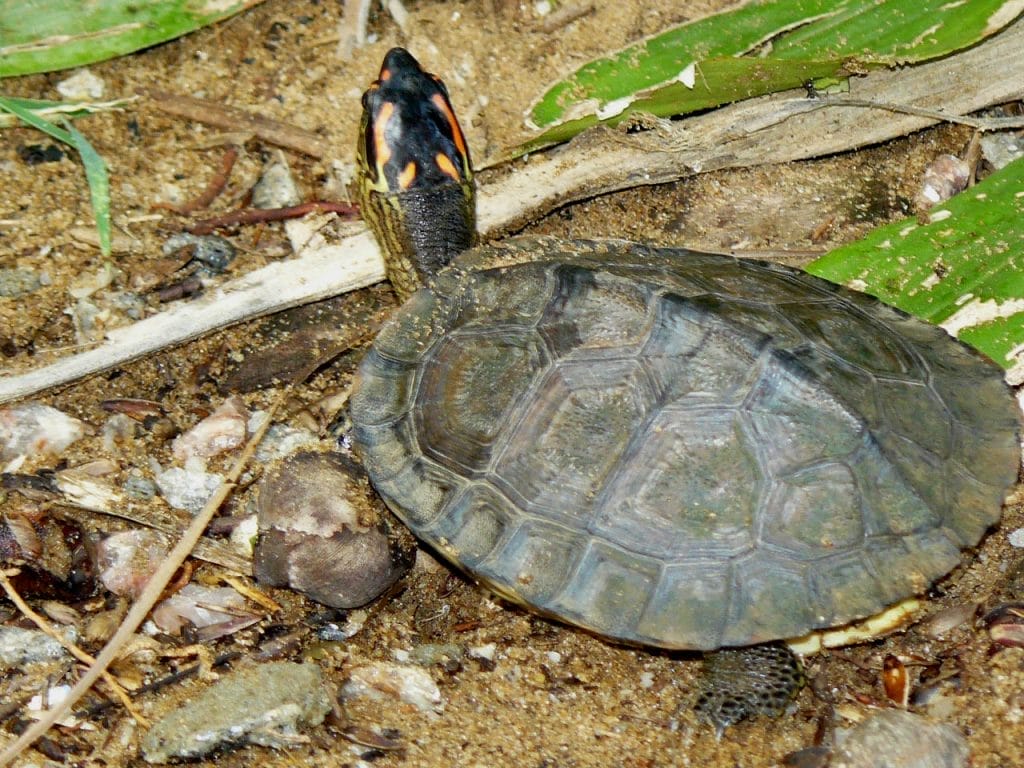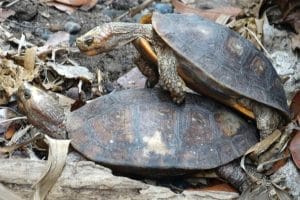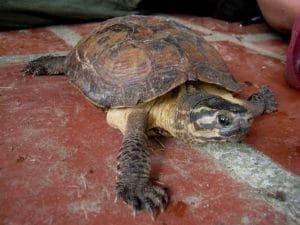Rhinoclemmys punctularia (Spot-legged Wood Turtle)
Home > Turtle Database > Rhinoclemmys punctularia (Spot-legged Wood Turtle)

Rhinoclemmys punctularia, commonly known as the Spot-legged Wood Turtle, is a freshwater turtle species native to parts of South America. It is recognized for its distinctive spotted limbs and its adaptability to both aquatic and terrestrial environments.
Native To These Regions
Amazonas (Brazil), Bolívar (Venezuela), Delta Amacuro (Venezuela), Guyana, Pará (Brazil), Roraima (Brazil), Suriname, Trinidad and Tobago, VenezuelaNative Turtle Species Map – Find Turtles by Region
Scientific Classification
Kingdom: Animalia
Phylum: Chordata
Class: Reptilia
Order: Testudines
Family: Geoemydidae
Genus: Rhinoclemmys
Species: R. punctularia
Common Names
Spot-legged Wood Turtle
Spotted-legged Wood Turtle
This Hilarious Turtle Book Might Know Your Pet Better Than You Do
Let’s be real—most turtle care guides feel like reading a textbook written by a sleep-deprived zookeeper.
This one’s not that.
Told from the snarky point of view of a grumpy, judgmental turtle, 21 Turtle Truths You’ll Never Read in a Care Guide is packed with sarcasm, sass, and surprisingly useful insights.
And hey—you don’t have to commit to the whole thing just yet.
Grab 2 free truths from the ebook and get a taste of what your turtle really thinks about your setup, your food choices, and that weird plastic palm tree.
It’s funny, it’s honest, and if you’ve ever owned a turtle who glares at you like you’re the problem—you’ll feel seen.
Identification
Description
This species has a dark brown to olive carapace, often slightly domed with a smooth texture. The skin is marked with small yellow spots, particularly on the limbs, which give the species its name. The plastron is yellowish with dark blotches along the seams. Its head features a narrow, pointed snout with a pattern of fine yellow markings.
Sexual Dimorphism
Males are generally smaller than females and have a longer, thicker tail. Males also have a slightly concave plastron, while females possess a flatter underside to accommodate egg-laying.
Check more turtles from the Rhinoclemmys genus
Native Origin and Distribution
Geographical Range
The Spot-legged Wood Turtle is found in northern South America, particularly in Venezuela, Guyana, Suriname, French Guiana, and parts of Brazil.
Preferred Habitat
This turtle inhabits tropical lowland forests, swamps, and wetlands. It prefers areas with access to shallow water but is also known to spend significant time on land, making it semi-terrestrial.
Behavior
Feeding Habits
Rhinoclemmys punctularia is omnivorous, consuming a mix of plant material, fruits, insects, and small invertebrates. It forages in both aquatic and terrestrial environments.
Predators
Natural predators include birds of prey, large fish, and mammals that feed on eggs and hatchlings. Humans also pose a threat through habitat destruction and collection for the pet trade.
Reproduction
Breeding Season
Mating typically occurs during the rainy season when environmental conditions are most favorable.
Reproductive Method
Females lay small clutches of eggs in moist soil or leaf litter. The eggs incubate for several months before hatching, with temperature playing a role in determining the sex of the offspring.
Conservation
Extinction Status
Currently classified as Least Concern by the IUCN.
Threats
Deforestation, habitat fragmentation, and pollution are the primary threats. Collection for the pet trade also impacts some local populations.
Conservation Measures
Protected areas and wildlife reserves help safeguard their natural habitat. Raising awareness about sustainable pet trade practices is also important.
Economic Importance
This species is sometimes kept as a pet due to its attractive markings and manageable size. It also plays a role in local ecosystems by controlling insect populations and dispersing seeds through its diet.
Interesting Facts
- Unlike fully aquatic turtles, the Spot-legged Wood Turtle can spend extended periods on land.
- It uses its strong legs and claws to dig burrows and find shelter under vegetation.
- When threatened, it can retract into its shell, though not as completely as some other turtle species.

About Author
Muntaseer Rahman started keeping pet turtles back in 2013. He also owns the largest Turtle & Tortoise Facebook community in Bangladesh. These days he is mostly active on Facebook.














